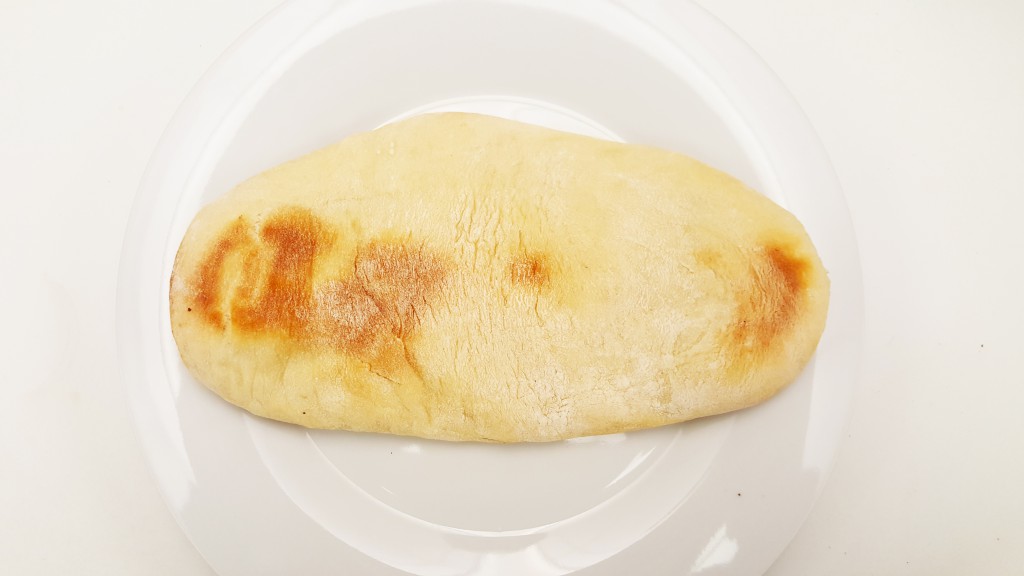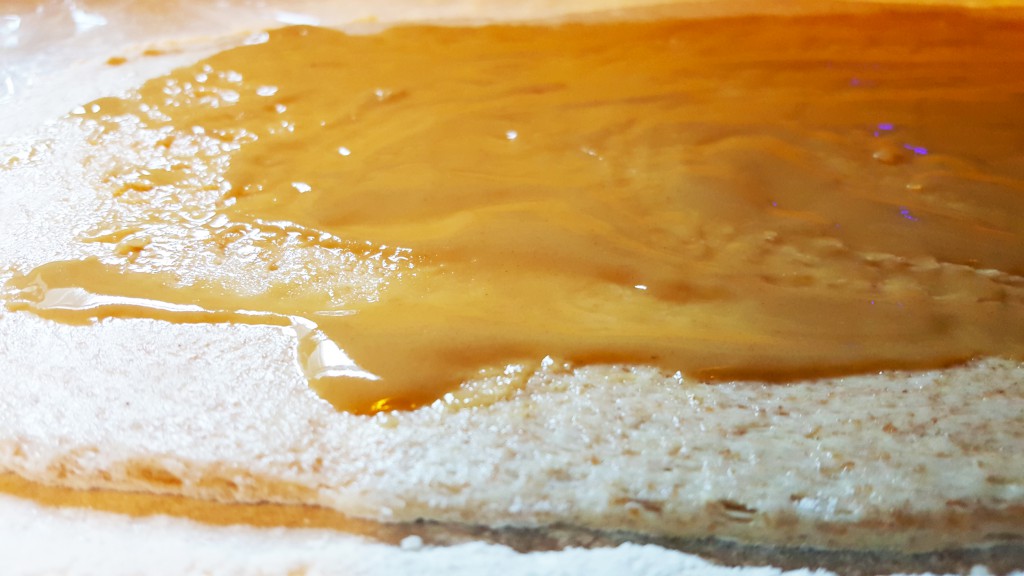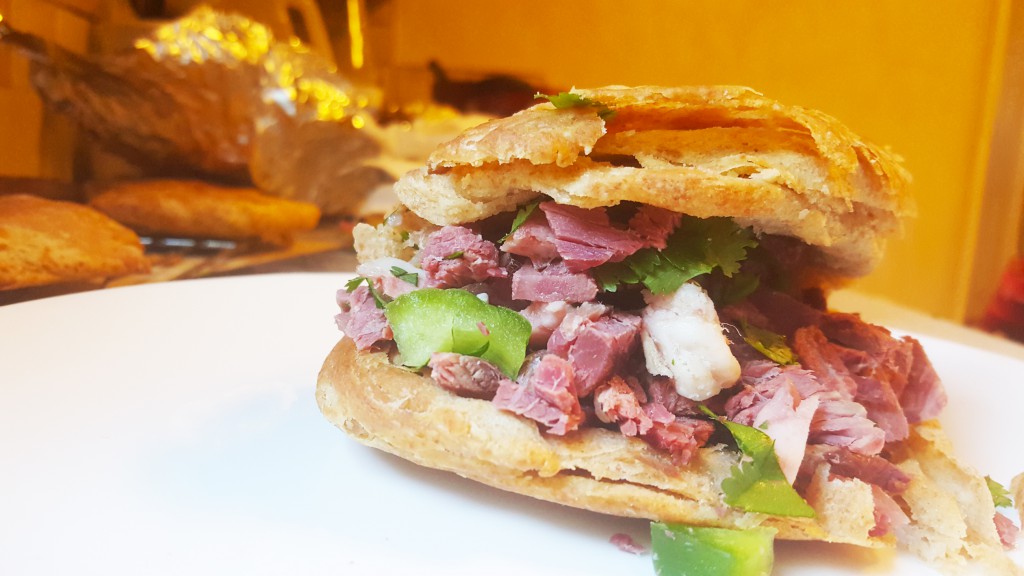A Donkeyless Donkey Burger
Look, you can’t get donkey meat in the US.
OK, back up a minute. You probably can, shipped frozen from overseas. But they sell it by the shipping container, so the minimum order is something like several tons. Or you might be able to make friends with someone who owns a donkey farm (is that a thing?) and drop hints when one of their animals is starting to look a little long in the tooth. Of course, then you’ve got eight hundred pounds of hairy carcass to deal with.
There are other potential sources as well–I’d hoped to be able to work with the guy from Czimer’s, an exotic meat shop in the southwest suburbs of Chicago, but it appears that they closed sometime in 2014. (Why the website is still active, I cannot tell you.) The exotic meat markets I found online didn’t carry donkey–not exotic enough? As far as I can tell it’s not exactly illegal here, and yet…
So I amend my original statement to this: I can’t get donkey meat in the US. And since I can’t afford to travel to China to try a sandwich, not to mention that I don’t even have a passport–it’s on my “to do” list for 2016, honest!–that doesn’t leave a lot of room for me to try a legitimate version of China’s infamous Donkey Burger.
Donkey burgers are made of chopped donkey meat, stuffed into a Chinese style layered flatbread called huoshao or shaobing, with chopped green pepper and sometimes cilantro. According to some sources, you can also get donkey penis burgers. Dannis Ree, take note. They are a regional cuisine of the Hebei province of northern China, where the saying goes that “In Heaven there is dragon meat; on Earth there is Donkey meat.” (You will read this quote in every donkey burger article online and I’d hate to disappoint.) Donkey burgers are also common in nearby Beijing (formerly part of Hebei), not unheard of as far away as Shanghai, and donkey meat from Hebei is prized throughout China.
In a Donkey Burger, the donkey meat isn’t ground, nor is the sandwich particularly burger-like. Personally, I think whoever translated Lu Rou Huo Shao as “donkey burger” missed a golden opportunity.
The Meat
So how do you make a donkey burger without donkey meat? Horse meat is the nearest analogue to donkey meat, from everything I’ve read. But horse meat isn’t exactly easy to come by around here either. What does the donkey meat in a donkey burger taste like?
By all accounts, it tastes like corned beef or pastrami. Almost every picture I’ve seen of a legitimate donkey burger has featured meat with the deep distinctive pinkish hue of cured red meat. Descriptions say that the meat is brined, boiled or simmered, then chilled, chopped up, and served cold in the hot freshly-baked flatbread. Donkey meat is quite lean (only 1/4 the fat content of beef), so it is sometimes supplemented by gelatinous globs of cooked cutaneous fat called pidong.
To approximate the leanness of donkey meat, I picked one of the leanest cuts of beef, a sirloin tip roast, to cure for my “donkey burgers.” Chinese techniques for curing meat are similar enough to European techniques–salt, sugar, nitrites, and spices in a brine–but English-language recipes have been difficult to find. I had to wing it.
From what I’ve read about the cuisine of Hebei, it tends toward the salty, savory, and starchy–“fairly meat heavy, with more noodles than rice” according to Wikivoyage, and “strong and savory and always served with soup” according to China Daily. In fact, from what I’ve read, donkey burger vendors invariably serve at least a couple of different soups featuring the cured donkey meat in addition to their sandwiches.
So I decided to use a five spice-inspired brine to cure the beef–star anise, cinnamon, Sichuan peppercorns, fennel seeds, clove, garlic, ginger, soy sauce, kosher salt, soy sauce, orange zest, and a little brown sugar, with the requisite nitrites in the form of Prague Powder #1. I let the roast cure for a week and then simmered it in some plain water for an hour or two.

Boiled meat is not the prettiest thing
You can see a couple of small fat deposits here and there but overall this is lean meat without much marbling, far from the collagen-and-fat-heavy briskets that are usually turned into corned beef. It’s brown from the soy sauce in the brine, but once you chop it up it’s much more colorful.

The peppers and cilantro add some color too
There’s flavor there, but I’m not going to lie–this is fairly dry stuff after curing and simmering. I used some of the meat in a soup–again, winging it, since Chinese donkey soup recipes aren’t easy to find in English. The soup turned out terrific–thin sliced onion, mushrooms, cubes of tofu, cabbage, garlic, and ginger with sliced meat and green pepper in homemade chicken stock dosed with soy sauce.

“Donkey” soup
The soup helped make up for the leanness of the meat. How would it fare in sandwiches though?
The Bread
The internet is full of recipes for shaobing but they are invariably of the sweeter, sesame-paste-stuffed variety, rather than the savory ones required for this sandwich. However, I thought I could probably adapt those techniques into something approaching what I was looking for. I started with this video showing the layering that goes into shaobing.
The video does not provide an ingredient list, but it looked like she was using an oil, then sesame paste, and maybe some flour to separate the layers. Each piece of dough is then twisted and smashed into a pancake shape before being rolled out into a rectangular bun. I tried this with a simple flour/salt/yeast/water dough, and used sesame oil alone to create the layers. My result was a delicious piece of bread, but the layers simply weren’t there. The oil was absorbed into the dough and what I ended up with was much like an elongated pita.

Fluffy. Tasty. Dull.
I decided not to use any of my faux donkey meat on this bread, as it wasn’t quite what I was hoping for. It made for a terrific curried chicken salad sandwich though.

“shao bing” with curry chicken salad
This first attempt was fluffy and light instead of flaky and layered like the shaobing I’d seen in my research had been. I figured I needed to fight that on two fronts, the rise and the layering. To keep it from turning out quite so fluffy I added a bit of wheat flour, hoping that would keep the bread a little denser. I needed to figure out the layering though. How to keep the oil from being absorbed, so that the layers would persist in the final product?
The answer, seemingly counterintuitively, was to make a roux. If the oil has already been absorbed by some additional flour, it won’t get absorbed into the flour that’s already in the dough. So I made a roux using a combination of vegetable oil, sesame oil, and all-purpose flour, cooking it to a blonde color, and then spreading it over the rolled-out dough before rolling and twisting and smashing it down into rounds.

Second shao bing attempt used sesame oil roux for layering
These shaobing looked great, super flaky and crisp, with the evident layering I’d hoped for. However, they were too dry and boring, even when combined with the lean, savory cured sirloin tip and some fresh green peppers.

First attempt at “Donkey” Burger
I also tried adding some cilantro and additional fat without succeeding at making the sandwich any better. I was going to need a better bread. I may not be able to get real donkey meat, but dammit I’m going to get something right.

The extra fat didn’t make it any tastier.
Getting it right(ish)
I finally found a good-looking recipe for sandwich shaobing on a tumblr called Yu Can Cook. For their sandwiches they filled the shaobing with braised beef shank, pig ears, and pickled onions, which also sounds delicious, but faux donkey is the order of the day here at the Tribunal. The recipe uses a yeasted dough, layered with a roux as I’d tried previously, but with a different layering technique, resulting in a rectangular flatbread. They also top theirs with sesame seeds, and you know what? I’m coming around to the idea. Sesame seed buns are pretty standard on burgers, right?

Two all-donkey patties, yadda yadda
Just for fun, I tried griddling one of these shaobing, as some of the descriptions of donkey burgers that I’ve read describe the flatbreads being griddled. I liked the way the griddled shaobing turned out, crisp and chewy, but I’m pretty sure that the shao part of shaobing or huo shao specifically refers to the bread being oven baked. Can any Chinese speakers confirm or deny?

It’s a little chewier/denser than the baked bread but damn good
Another change I made was to use chopped fresh jalapenos instead of green bell peppers, along with the cilantro. Jalapeno/cilantro is a common combination in another Asian sandwich, the banh mi, and I thought it would work well here too. Besides, green bell peppers are boring.

Faux donkey burger with jalapeno
And this time, I made a sandwich worth eating. Something about the combination clicked–it was familiar yet strange, the corned beef making me anticipate mustard and rye with caraway seeds, the jalapeno/cilantro/sesame seed trying to fill those holes and almost succeeding, but instead creating something new. Or new to me, anyway.
I want another. But I’m out of my five spice corned beef, ahem I mean my donkey meat. I have plenty of Christmas ham left over that I could use instead, but really, who’s going to eat something called a Ham Burger?
So I’ll sign off for 2015 with this, my greatest failure to date. A Donkey Burger without any donkey. Someday, maybe sandwich fame will pay off and send one or more of us to China to try the real thing. Until then, I hope you enjoyed the 36 sandwiches from The List that we tried in 2015. We’ve got a bunch more coming up in 2016. Happy New Year, and enjoy every sandwich!

I like sandwiches.
I like a lot of other things too but sandwiches are pretty great













You really have to try the real donkey burger in China. Anyway thank you very much for your try. I am looking all around the internet to get some recipe for the Chinese donkey burger since I miss them so fkn much. I guess I will have to travel to China again and again for enjoying these..
I hope to one day. My friend Noel was over there and had one a few months after I posted this piece. Based on his pictures and description, I can see that I was way off.
Wow! I just moved to Beijing to do a masters degree at Peking University and I discovered Donkey Burger nearby (it’s a real restaurant). The meat is indeed a cold cut that tastes like really lean beef, probably closer to brisket than sirloin, though, and cooked in five-spice and soy sauce. And…they also chop jalapenos and cilantro into it.
If you still haven’t been to China yet, go to Chinatown in Chicago. I just googled a place called “Xi’an Cuisine” on 225 W Cermak Rd. The donkey meat filling tastes like the “Sliced Marinated Beef” on the Xi’an Cuisine menu, which is a cold cut appetizer of lean beef cooked in a five spice and soy sauce. The donkey burgers in Beijing actually come in two different styles of bread…round style and long rectangle style, and it’s similar to Xi’an style flat bread. The Xi’an style flat bread (in chinese it’s called Rou Jia Mo) is in a round style. In Xi’an (the city) it’s baked in a big tandoori-type of coal oven. Looking at pics of the flatbread at Xi’an Cuisine restaurant, it doesn’t look too authentic, it doesn’t seem flakey enough, but I guess it’s close.
thanks Joe! I did check out Xi’an Cuisine when I wrote about Rou Jia Mo a while back. Still haven’t had a real donkey burger though. Some day…
Cool, let me check out your Rou Jia Mo article. I love sandwiches and your blog. Keep up the great writing about them, dude!